David Leitner
The Rise of Reactive Microservices
#1about 3 minutes
The pitfalls of synchronous microservice communication
Synchronous calls between services create tight coupling and lead to cascading failures when downstream systems experience latency.
#2about 4 minutes
Decoupling services with asynchronous message queues
Using message queues like RabbitMQ isolates high-latency services and improves system resilience by changing from immediate creation to eventual acceptance.
#3about 4 minutes
Avoiding the entity service anti-pattern in architecture
Slicing microservices based on data entities like 'user' or 'account' creates dependencies across teams and slows down feature development.
#4about 7 minutes
Using push-based streams for data synchronization
Reactive systems push data changes through event streams, allowing services to build local read models (projections) and achieve runtime autonomy.
#5about 7 minutes
Navigating the challenges of eventual consistency
Eventual consistency involves three main challenges—divergence, variance, and latency—which can be managed with ordering, deduplication, and optimistic UIs.
#6about 5 minutes
The key benefits of building reactive systems
Reactive architectures improve resilience and enable horizontal scaling by creating autonomous services that can build real-time, push-based user interfaces.
#7about 2 minutes
Decomposing monoliths with change data capture
Change Data Capture (CDC) streams events directly from a legacy database's transaction log, enabling gradual monolith decomposition without modifying the legacy code.
#8about 6 minutes
Achieving massive throughput with sharded architectures
Sharding partitions data and processing across independent streams, enabling systems to scale horizontally and handle nearly unlimited throughput.
#9about 3 minutes
Balancing architectural complexity and business needs
Evolving from a monolith to a sharded, stream-based system adds powerful capabilities but also increases complexity, so always choose the simplest architecture that meets your requirements.
#10about 3 minutes
Answering questions on micro-frontends and data ownership
The speaker discusses how micro-frontends align with team autonomy and clarifies that while data can be copied to projections, updates must go through the owning service.
Related jobs
Jobs that call for the skills explored in this talk.
Matching moments
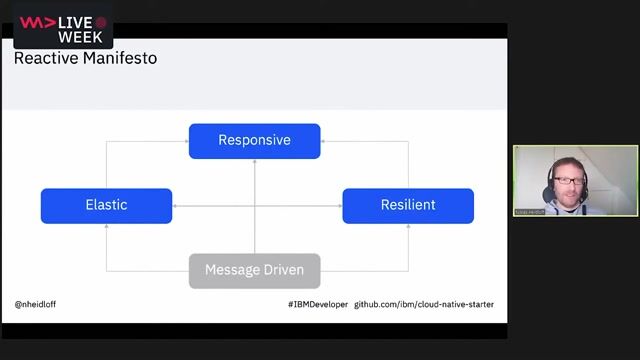
04:28 MIN
Core principles of the reactive manifesto
Development of reactive applications with Quarkus

00:04 MIN
Understanding the core principles of the reactive manifesto
Side-by-Side: Reactive vs non-reactive Java
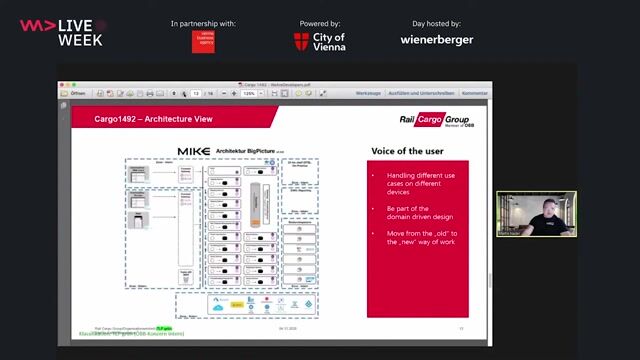
35:33 MIN
Building an event-based microservice architecture for agility
The user in the eye of the Cargo1492 storm

01:22 MIN
The rapid evolution of industrial and application architectures
Strategies to accelerate SaaS Application Development
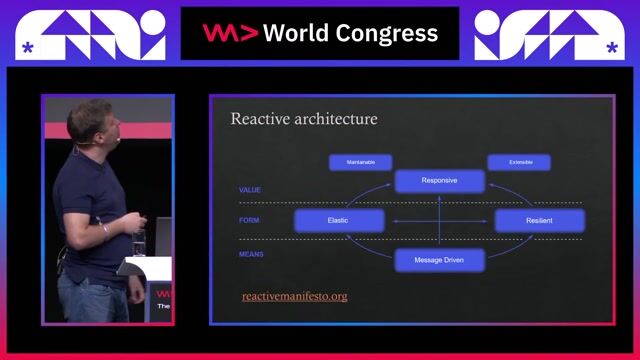
19:50 MIN
Understanding the principles of reactive architecture
Architectures that we can use with .NET

10:34 MIN
Implementing microservice and micro-frontend architectures
Crew Management System for Airlines: Plan duties for pilots & flight attendants worldwide

44:31 MIN
How to introduce new patterns like event sourcing
Seven Myths, Three Reasons, One Goal
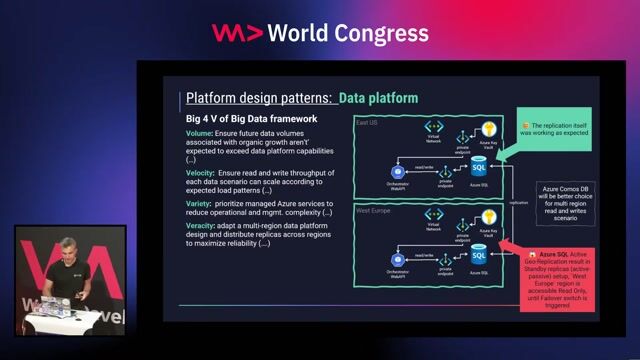
24:47 MIN
Understanding critical architectural trade-offs and anti-patterns
Azure-Well Architected Framework - designing mission critical workloads in practice
Featured Partners
Related Videos
 41:06
41:06Rethinking Reactive Architectures with GraphQL
David Leitner
 24:25
24:25Autonomous microservices with event-driven architecture
Florian Lenz
 26:22
26:22Modern software architectures
David Tielke
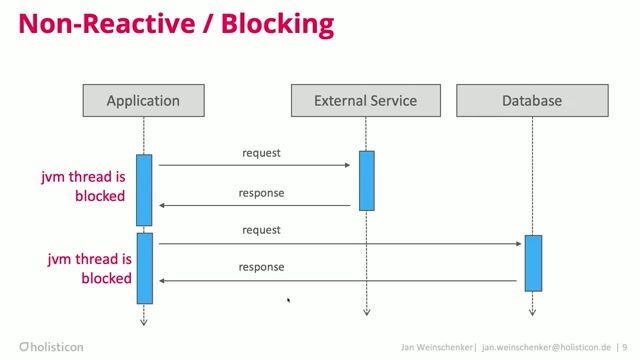 25:41
25:41Side-by-Side: Reactive vs non-reactive Java
Jan Weinschenker
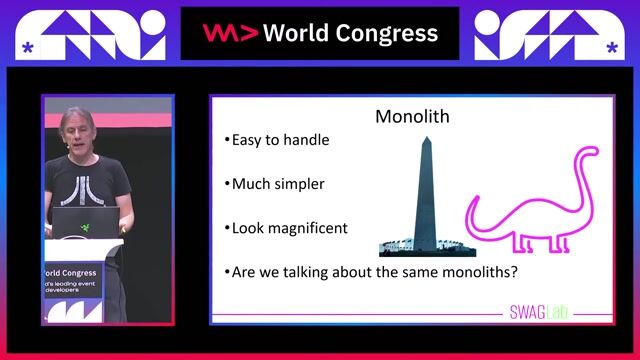 25:05
25:05Microservices? Monoliths? An Annoying Discussion!
Eberhard Wolff
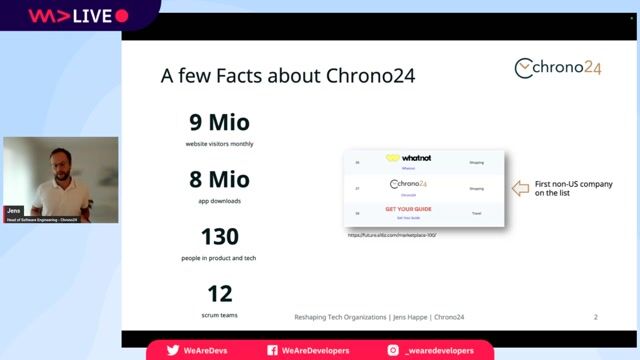 50:06
50:06Single Server, Global Reach: Running a Worldwide Marketplace on Bare Metal in a Cloud-Dominated World
Jens Happe
 43:27
43:27CQRS and Event Sourcing without the pixie dust
Allard Buijze
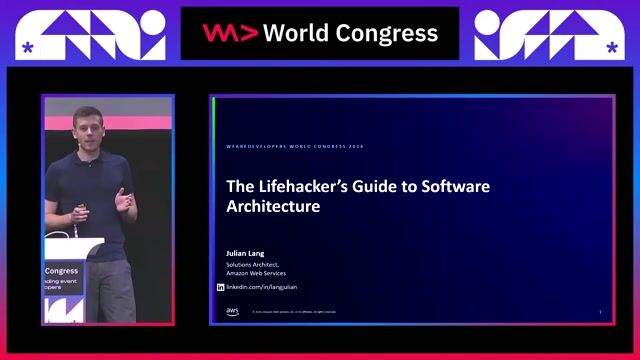 25:40
25:40The Lifehacker's Guide to Software Architecture
Julian Lang
From learning to earning
Jobs that call for the skills explored in this talk.

Senior Fullstack Engineer – Angular/.Net (f/m/d)
Apaleo
München, Germany
Remote
€65-85K
Senior
.NET
Angular
JavaScript
+1

Senior Systems/DevOps Developer (f/m/d)
Bonial International GmbH
Berlin, Germany
Senior
Python
Terraform
Kubernetes
Elasticsearch
Amazon Web Services (AWS)

Tech Lead (m/f/d) - Berlin
Patronus Group
Berlin, Germany
Senior
Kotlin
Android
Angular
Spring Boot
Amazon Web Services (AWS)
![Senior Software Engineer [TypeScript] (Prisma Postgres)](https://wearedevelopers.imgix.net/company/283ba9dbbab3649de02b9b49e6284fd9/cover/oKWz2s90Z218LE8pFthP.png?w=400&ar=3.55&fit=crop&crop=entropy&auto=compress,format)
Senior Software Engineer [TypeScript] (Prisma Postgres)
Prisma
Remote
Senior
Node.js
TypeScript
PostgreSQL

Cloud Engineer (m/w/d)
fulfillmenttools
Köln, Germany
€50-65K
Intermediate
TypeScript
Google Cloud Platform
Continuous Integration




Lead Full-Stack Engineer
Hubert Burda Media
München, Germany
€80-95K
Intermediate
Senior
React
Vue.js
Node.js
MongoDB
+1